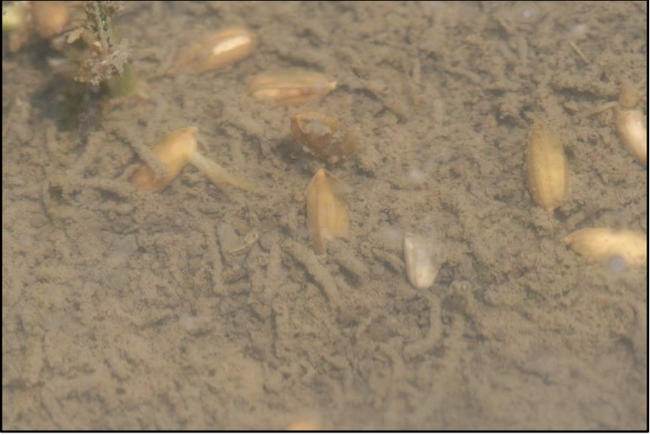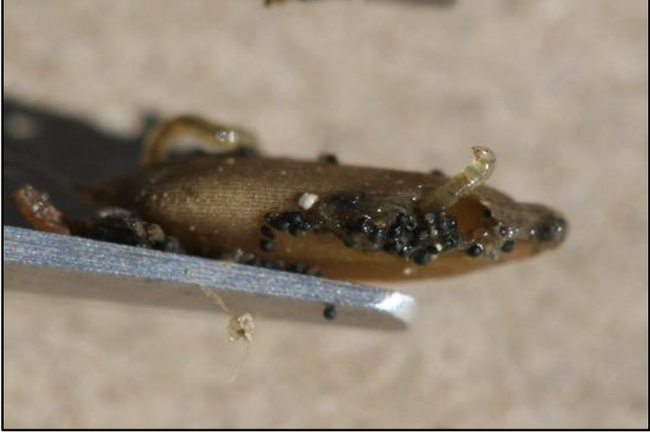In the past three years, there has been an increase in the number of reports of damage to rice by rice seed midge in the Sacramento Valley. During 2021 and 2022, the issue was not widespread, but there were some instances where the damage was severe. In 2023, several reports of damaged fields were received. We visited several of these fields with varying levels of injury in Colusa and Glenn Counties. One of these fields lost almost 20 acres to midge. Some of the damaged fields had received a pyrethroid treatment soon after seeding. While these insecticide applications may have provided some control in the past, it appears that may no longer be the case, and we are puzzled by the apparent inefficacy of the insecticide.
Rice seed midge survive in canals and ditches year-round. During spring, adults swarm, mate, and lay eggs on the surface of the water as fields are flooded. Eggs hatch after two days, and very small larvae swim to the bottom where they feed and build silken tubes that they use for protection. The tubes get covered with mud and algae and are easy to spot when the water is clear. The larvae initially feed on diatoms and algae and can start feeding on rice seeds and seedlings after around 5 days. After a few more days, larvae pupate, turn into adults, and repeat the cycle again.
Rice seed midge tubes near injured seeds
Injured seed with rice seed midge larva
When feeding on the germinating seed, larvae consume the embryo and endosperm, hollowing them out. Damaged seeds show an entrance hole in the hull near the embryo. Midge larvae can also clip the developing coleoptile or radicle, causing injury similar to tadpole shrimp. Hollowing of the seed and clipping the germinating structures will kill the seed. Once the coleoptile and radicle are well developed, midge injury is less likely to kill the seedling. Midge larvae also feed on larger seedlings. It is not uncommon for midges to perforate leaves; they may even attach their silken tubes to the seedling.
However, this type of injury does not kill the seedling. The best strategy to reduce the risk of injury by rice seed midge is to avoid planting too early or too late, avoid low or high temperatures during seeding, and seed soon after flooding. If injury is detected early enough and the field can be drained quickly, draining the field can reduce damage; however, injury can still occur in low areas of the field that do not drain completely. Planting high quality seed and maintaining an adequate flood can help seedlings establish quickly and avoid midge injury.
Lambda cyhalothrin, a common pyrethroid insecticide used for seedling pests in rice, has been used to manage rice seed midge. However, in recent years, we have noticed that some treated fields are still damaged by the midge. There is some evidence that indicates that midge larvae may not be as susceptible to this insecticide as we thought, possibly due to repeated applications of these insecticides through time. We are conducting field studies to confirm these observations and determine which insecticides could be used to help manage midge.

